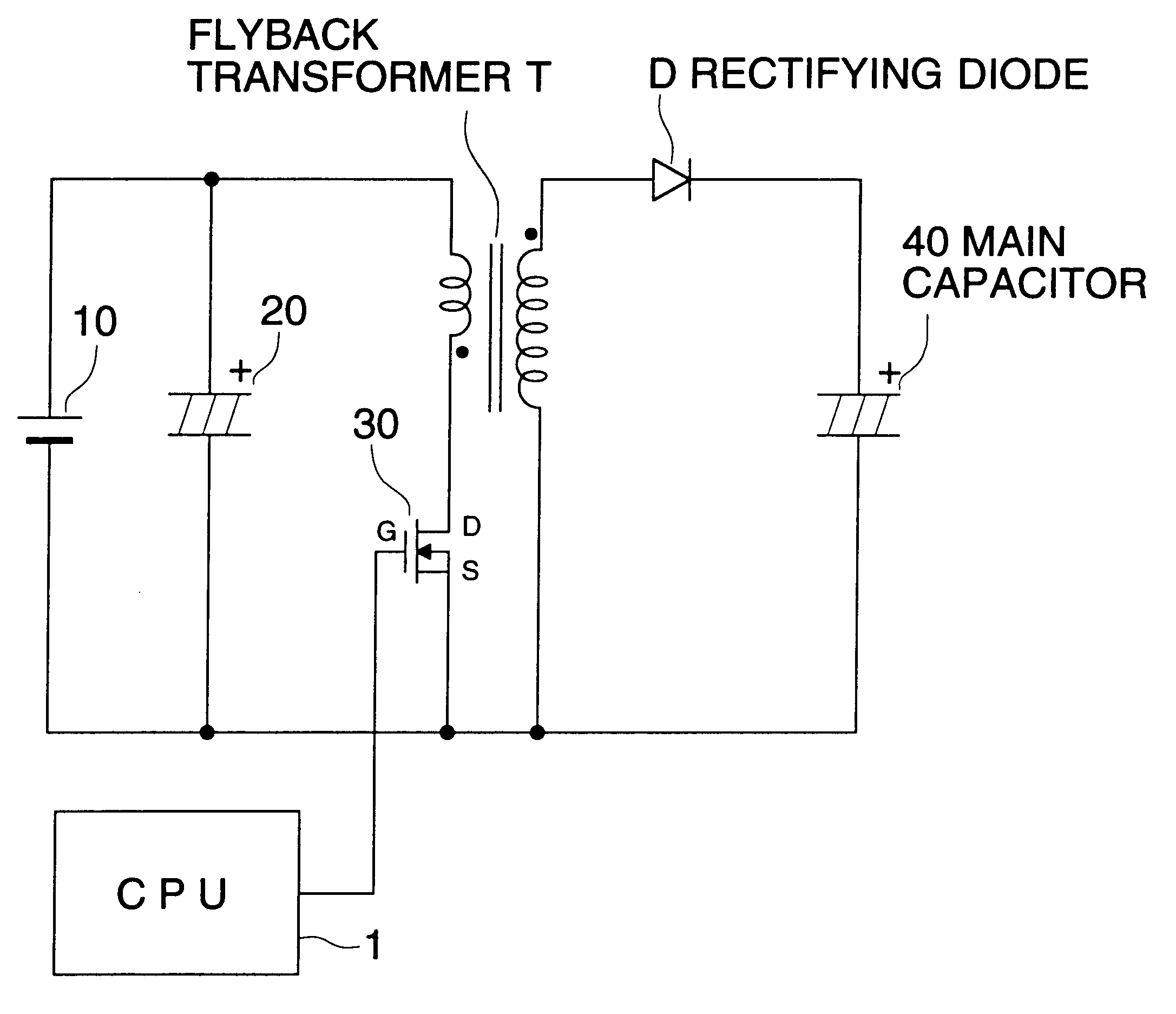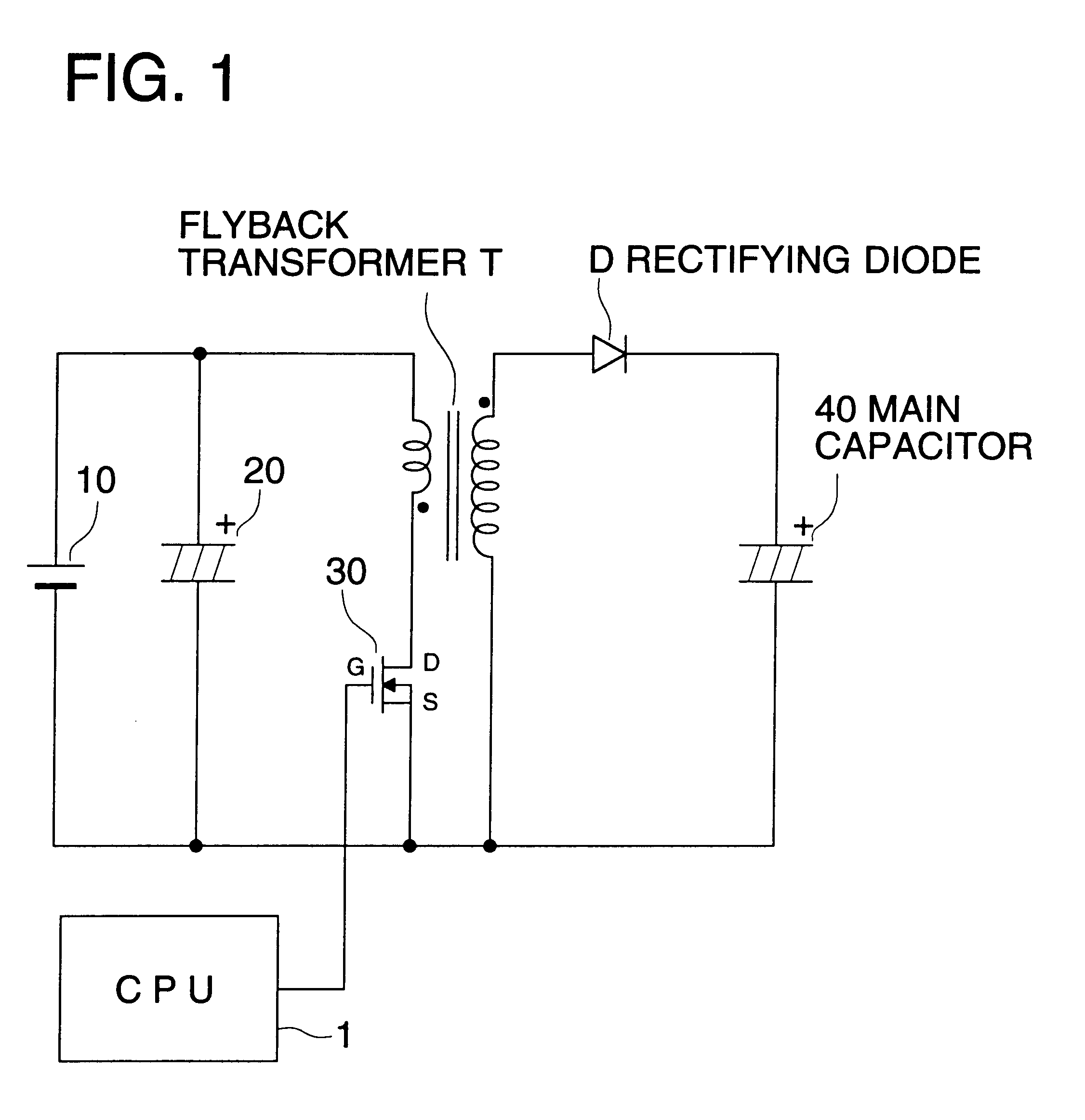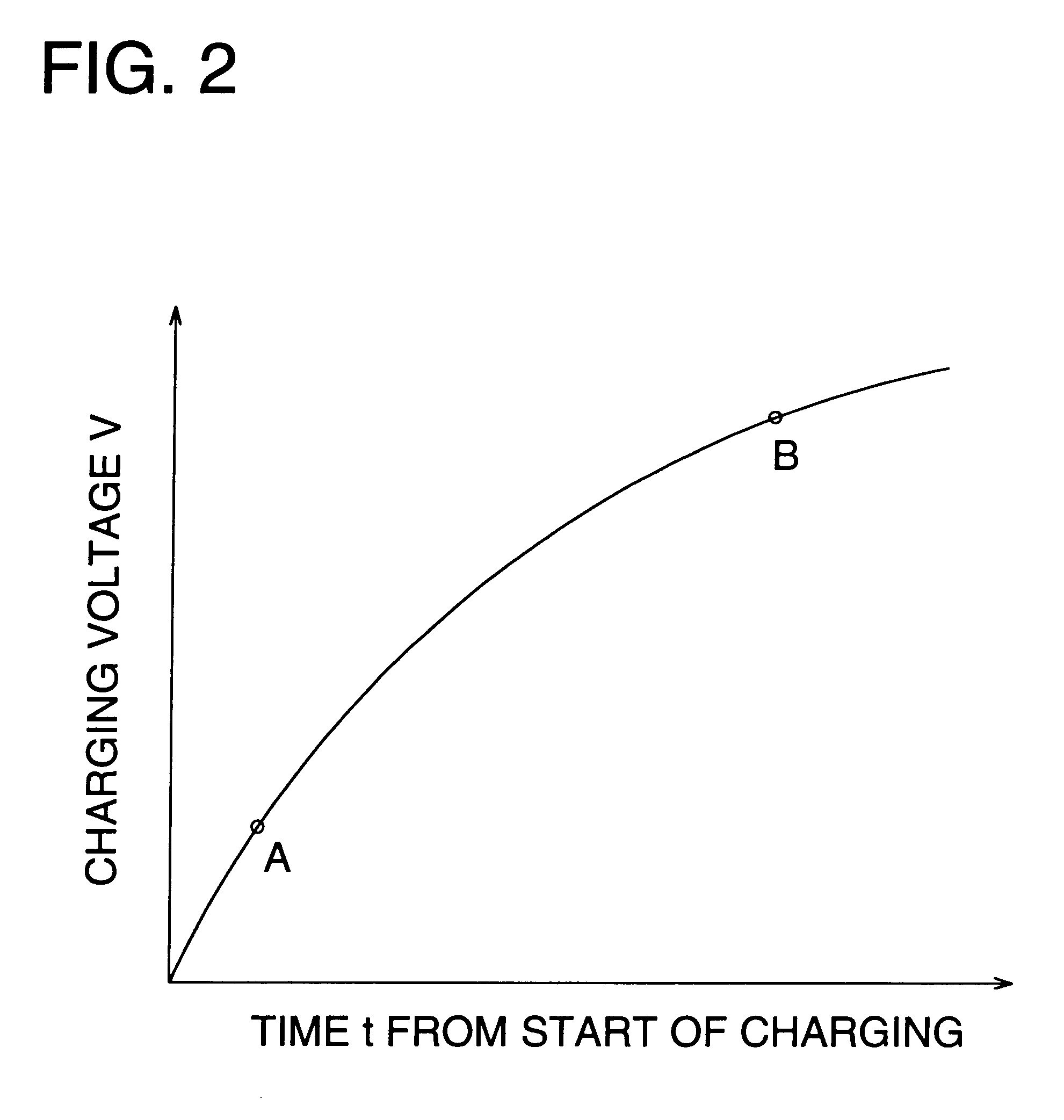Electronic flash device of a separate excitation oscillating type
a flash device and electric motor technology, applied in the field of electric motor flash devices and cameras, can solve the problems of longer charging time and inability to put the charging circuit of the separate excitation flyback type to practical us
- Summary
- Abstract
- Description
- Claims
- Application Information
AI Technical Summary
Benefits of technology
Problems solved by technology
Method used
Image
Examples
first embodiment
(First embodiment)
An embodiment of the invention will be explained in detail as follows.
(Structure of an electronic flash device)
First, the schematic structure of an electronic flash device used in the present embodiment will be explained as follows, referring to FIG. 1. FIG. 1 represents a functional block diagram showing the general electrical structure of an electronic flash device in an embodiment of the invention.
The electronic flash device in the present embodiment shown in FIG. 1 is an electronic flash device of a separate excitation flyback type wherein a circuit of a separate excitation oscillation type and a circuit of a flyback type are combined to be used.
A step up circuit of a separate excitation flyback type is provided with a characteristic that consumption current can be controlled, because behavior of the current flowing through the primary coil is constant independently of charging voltage, due to operations of a flyback type wherein an electric current is caused t...
second embodiment
(Second embodiment)
Next, another embodiment will be explained as follows, referring to FIG. 17. Now, the only points differing from the first embodiment will be explained. The numeral 50 represents a pulse detecting section which detects flyback pulses on one end of the secondary coil of flyback transformer T, and it is composed of a diode and a voltage dividing resistance, and results of detection of flyback pulses are supplied to CPU 1.
FIG. 18 shows the circuit structure of the similar electronic flash device wherein pulse detecting section 50 is detecting flyback pulses on one end of the primary coil of flyback transformer T.
Operations of the electronic flash device of the present embodiment are the same as those explained with reference to FIG. 2 and FIGS. 3(a)-3(f) in the first embodiment, and when charging advances and voltage in the main capacitor 40 becomes higher, a period contributing to no charging is increased. Namely, a period following the generation of flyback pulses ...
example
When it is assumed that the duty ratio of 58% is taken after the setting of ON:10 .mu.s and OFF:8 .mu.s (duty ratio: 55.6%) when changing the time as charging voltage rises, the setting of ON:11 .mu.s and OFF:8 .mu.s (duty ratio: 57.9%) with the changed ON time is closer to the desired setting than the setting of ON:10 .mu.s and OFF:7 .mu.s (duty ratio: 58.8%).
It is possible to conduct rapid charging by preventing generation of idle time and by controlling so that the number of flyback pulses generated within a specified period may be increased or they may be made greater. In this case, consumption current grows as charging advances, but the oscillation transistor is turned on after extinction of the flyback pulses. Therefore, it is possible to conduct charging while keeping high conversion efficiency, without having the control that the oscillation transistor is turned on when charging current is flowing.
FIG. 12 shows the circuit structure of an electronic flash device, and it show...
PUM
 Login to View More
Login to View More Abstract
Description
Claims
Application Information
 Login to View More
Login to View More - R&D
- Intellectual Property
- Life Sciences
- Materials
- Tech Scout
- Unparalleled Data Quality
- Higher Quality Content
- 60% Fewer Hallucinations
Browse by: Latest US Patents, China's latest patents, Technical Efficacy Thesaurus, Application Domain, Technology Topic, Popular Technical Reports.
© 2025 PatSnap. All rights reserved.Legal|Privacy policy|Modern Slavery Act Transparency Statement|Sitemap|About US| Contact US: help@patsnap.com



